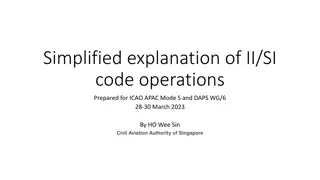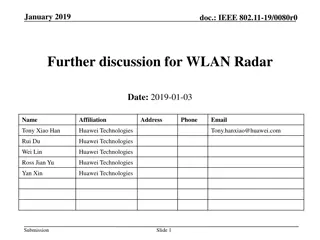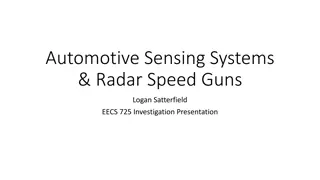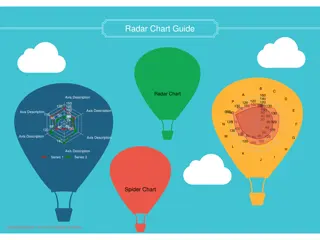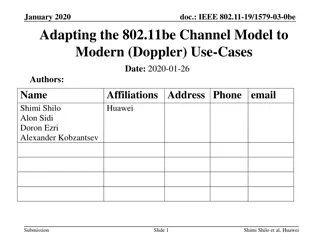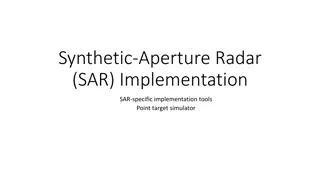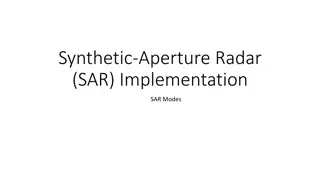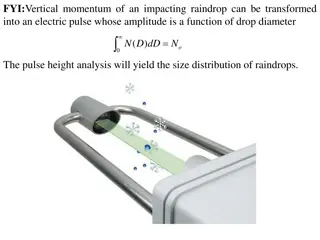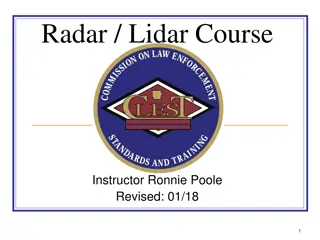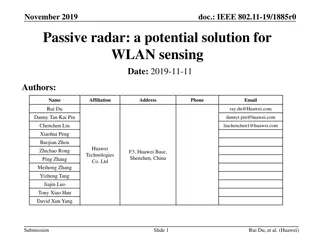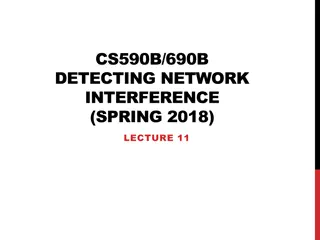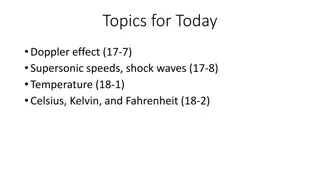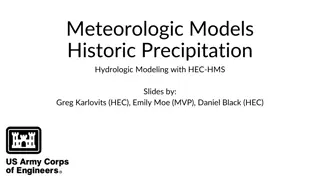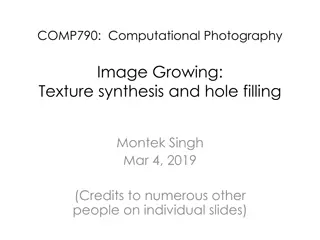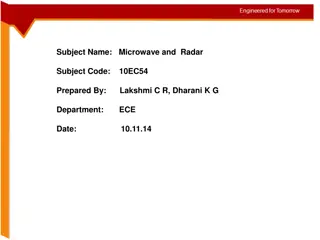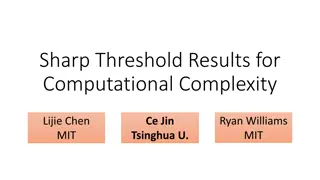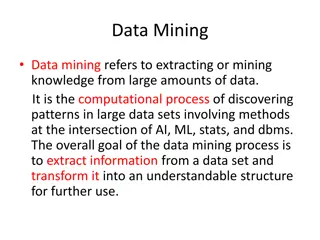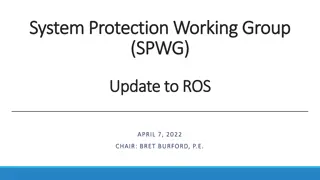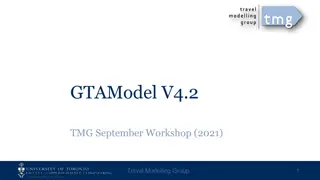Recent Advances in Computational Doppler Radar Data Modeling
Explore the latest developments in computational modeling of Doppler radar data, focusing on error estimation, dual vs. single pol radars comparison, uncertainty quantification, and methodology for analyzing Doppler radar predictions against gauge measurements. The study involves data from multiple storms and geographical regions, categorized by storm accumulation and daily rainfall.
Download Presentation

Please find below an Image/Link to download the presentation.
The content on the website is provided AS IS for your information and personal use only. It may not be sold, licensed, or shared on other websites without obtaining consent from the author. Download presentation by click this link. If you encounter any issues during the download, it is possible that the publisher has removed the file from their server.
E N D
Presentation Transcript
Recent Advances in Computational Modeling of Doppler-Radar Data Valmir Bucaj United States Military Academy, West Point (joint work with Hromadka et. al.)
Outline: I. Error Estimation in Doppler Radar Predictions
Outline: I. Error Estimation in Doppler Radar Predictions II. Single vs. Dual Pol Radars: A Comparison Analysis
The Data Taken from multiple sources Spread across multiple storms and geographical domains The majority of data are categorized via total storm accumulation Daily rainfalls measured in millimeters
How to quantify the uncertainty associated with such Doppler Radar predictions? Dual Doppler Radar vs. Gauge Estimated Precipitation
Methodology Methodology (G,D) is the pair of data of interest, D denotes Doppler Radar predictions G the actual gauge measurements on the ground
Methodology Methodology (G,D) is the pair of data of interest, D denotes Doppler Radar predictions G the actual gauge measurements on the ground ?is a sequence of Doppler Radar predictions ?? ?
Simulations Simulations
Simulations: Dual Single
Comparing Single versus Dual Polarized Doppler Radar Performance? Comparing Single versus Dual Polarized Doppler Radar Performance?
Comparing Single versus Dual Polarized Doppler Radar Performance? Comparing Single versus Dual Polarized Doppler Radar Performance? How do the GEP distributions for Single and Dual Pol Radar compare?
Comparing Single versus Dual Polarized Doppler Radar Performance? Comparing Single versus Dual Polarized Doppler Radar Performance? How do the GEP distributions for Single and Dual Pol Radar compare? Is the observed difference in means statistically significant?
GEP Distributions for DREP=-0.3 (in StdDev) Example: Dual Pol GEP Distribution Single Pol GEP Distribution
Normal Q-Q Plot The red line corresponds to y=x
Normal Q-Q Plot The red line corresponds to y=x A point (P1,P2) on the blue curve corresponds to the quantile of the respective Single and Dual Pol GEP distributions
Normal Q-Q Plot The red line corresponds to y=x A point (P1,P2) on the blue curve corresponds to the quantile of the respective Single and Dual Pol GEP distributions Since the blue curve deviates enough from the red line=> the Single and Dual Pol GEP distributions are fairly different from one another (i.e. they are not linear transformations of each other)
Two Sample Bootstrap Tests Two Sample Bootstrap Tests
Bootstrap Tests Bootstrap Tests DO s: To quantify the random variability in the observed sample statistics Obtain a quantitative estimate on how accurate the original sample estimate was
Bootstrap Tests Bootstrap Tests DO s: To quantify the random variability in the observed sample statistics Obtain a quantitative estimate on how accurate the original sample estimate was DON Ts Bootstrap tests DO NOT produce better estimates of the population statistics of interest
How Does Two-Sample Bootstrap Work? Repeat the following two steps 15000 times:
How Does Two-Sample Bootstrap Work? Repeat the following two steps 15000 times: Draw 1165 samples from the distributionV V ?.? Compute the bootstrap mean ?1 ?
How Does Two-Sample Bootstrap Work? Repeat the following two steps 15000 times: Draw 1165 samples from the distributionV V ?.? Compute the bootstrap mean ?1 ? Draw 1557 samples from the distribution V V ?.? Compute the bootstrap mean ?2 ?
How Does Two-Sample Bootstrap Work? Repeat the following two steps 15000 times: Draw 1165 samples from the distributionV V ?.? Compute the bootstrap mean ?1 ? Draw 1557 samples from the distribution V V ?.? Compute the bootstrap mean ?2 ? ?2 Compute the difference ?1
How Does Two-Sample Bootstrap Work? Repeat the following two steps 15000 times: Draw 1165 samples from the distributionV V ?.? Compute the bootstrap mean ?1 ? Draw 1557 samples from the distribution V V ?.? Compute the bootstrap mean ?2 ? ?2 Compute the difference ?1 Plot the bootstrap mean differences Compute the mean, ? ,of the bootstrap distribution
Observed Mean refers to the observed sample mean ?1 ?2 Mean refers to the mean of the bootstrap distribution, namely ?1 ?2
Summary of Results ?1 ?2 BSE* (Bootstrap SE) 95% Confidence Interval Bias 0.0735744 0.0001529819 0.019289 (0.0361, 0.1116)
Summary of Results ?1 ?2 BSE* (Bootstrap SE) 95% Confidence Interval Bias 0.0735744 0.0001529819 0.019289 (0.0361, 0.1116) Provided that the bias estimate of the difference in means is insignificant and the Bootstrap Standard Error is also small, one may conclude that the observed difference in sample means is a good estimator of the difference in actual respective population means
Summary of Results ?1 ?2 BSE* (Bootstrap SE) 95% Confidence Interval Bias 0.0735744 0.0001529819 0.019289 (0.0361, 0.1116) Provided that the bias estimate of the difference in means is insignificant and the Bootstrap Standard Error is also small, one may conclude that the observed difference in sample means is a good estimator of the difference in actual respective population means Since the 95% Bootstrap CI does not contain zero, it is strongly suggested that the difference in sample means is more than can be explained by random variation


